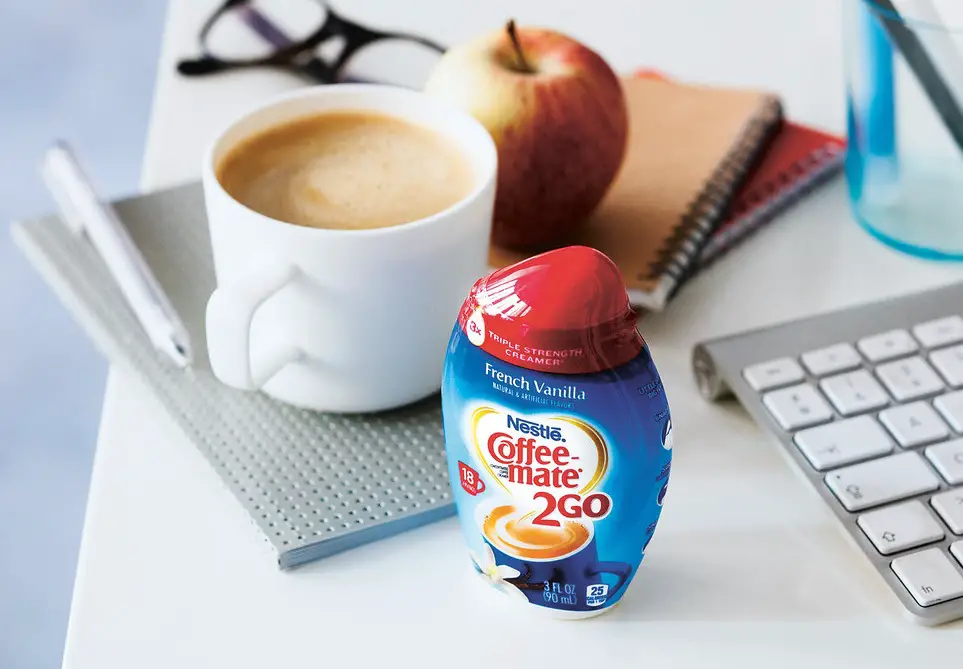Table of Contents
Creamer can go bad, just like any other dairy or non-dairy product. Typically, it lasts one to two weeks after opening.
Understanding the shelf life of creamer helps prevent unpleasant surprises in your coffee. Creamer, whether dairy or non-dairy, has an expiration date. This date provides a guideline for safe consumption. But other factors also play a role. Storage conditions, packaging, and whether it has been opened all affect its longevity.
Knowing how to spot signs of spoilage can save you from a bad cup of coffee. This blog will explore how long creamer lasts and tips to keep it fresh longer. Stay tuned to learn more and ensure your coffee always tastes great!
Shelf Life Of Creamer

Creamer is a popular addition to coffee and tea, but how long does it take for creamer to go bad? Understanding the shelf life of creamer can help you avoid using spoiled creamer in your beverages. Different types of creamers have different storage needs and expiration timelines. Let’s explore these details to keep your creamer fresh and safe to use.
Also Read: How Long Does It Take for Pizza to Go Bad: Essential Guide
Dairy Vs. Non-dairy
Dairy creamers and non-dairy creamers have varying shelf lives. Knowing these differences is crucial for safe consumption.
Dairy Creamers:
- Typically last for about 1-2 weeks after opening.
- Must be stored in the refrigerator.
- Can spoil quickly if left out at room temperature.
Non-Dairy Creamers:
- Often have a longer shelf life, lasting up to 1 month after opening.
- Some types are shelf-stable and can be stored at room temperature before opening.
- Once opened, it’s best to keep them in the refrigerator for maximum freshness.
Cream Shelf Life varies significantly between dairy and non-dairy options. Always check the packaging for specific storage instructions and expiration dates.
Factors Affecting Shelf Life

Several factors can influence how long your creamer stays fresh and safe to use.
Storage Conditions:
- Refrigeration Effects On Creamer: Keeping dairy creamers in the fridge extends their lifespan.
- Shelf-Stable Creamers: Non-dairy creamers can be stored at room temperature before opening.
Packaging:
- Single-serve packets tend to last longer than larger containers.
- Airtight packaging helps prevent spoilage.
Ingredients:
- Creamers with preservatives will last longer.
- Natural and organic creamers may have a shorter shelf life.
Understanding these factors can help you optimize creamer freshness tips and avoid expired creamer signs. Look for cream spoilage indicators such as an off smell, curdling, or changes in texture. Proper dairy creamer storage and storing creamer properly will ensure your creamer remains safe and tasty.
Signs Of Spoilage
Understanding how long it takes for creamer to go bad is crucial for maintaining food safety. Creamer spoilage indicators can help you avoid consuming bad creamer. This blog post will focus on the signs of spoilage. We will discuss the smell and taste, and visual indicators. Knowing these signs can prevent health issues and ensure the best taste in your coffee.
Smell And Taste
Smell and taste are strong indicators of creamer spoilage. Fresh creamer has a mild, sweet aroma. Spoiled creamer often smells sour or rancid. Here’s what you should look for:
- Sour Smell: If the creamer smells sour, it is probably bad.
- Off Taste: Tasting the creamer can also help. A sour or bitter taste means it is spoiled.
Trust your senses. If the smell or taste is off, do not use the creamer. The shelf life of creamer varies. Dairy products spoil faster than non-dairy options. Always check the expiration date. Once opened, use dairy creamer within a week. Non-dairy creamer can last a bit longer.
Visual Indicators

Visual cues can also show signs of spoiled creamer. Fresh creamer is smooth and uniform. Spoiled creamer may show the following:
| Indicator | Description |
|---|---|
| Curdling | Curdled texture means the creamer has gone bad. Lumps or clumps are a clear sign. |
| Color Change | Fresh creamer is white or off-white. A yellow or brown hue indicates spoilage. |
| Mold | Any sign of mold means the creamer is not safe to use. |
Proper storage can help extend the shelf life of creamer. Keep it refrigerated and tightly sealed. Avoid leaving it out for long periods. These creamer storage tips can help maintain freshness and prevent spoilage.
Storage Tips
Creamer is a popular addition to coffee, offering a creamy texture and flavor. Knowing how long it takes for creamer to go bad is important to avoid consuming spoiled products. Proper storage methods can extend the lifespan of both dairy and non-dairy creamers. This guide provides essential storage tips to keep your creamer fresh and safe to use.
Refrigeration Guidelines
Refrigeration is key to maintaining creamer freshness. Dairy product expiration depends heavily on proper storage. Here are some vital tips for refrigerated creamer storage:
- Always store creamer in the refrigerator at 40°F (4°C) or below.
- Keep the creamer away from the refrigerator door. Temperature fluctuations can hasten spoilage.
- Check the “Best Before Date On Creamer” packaging. This helps track the creamer shelf life.
- Ensure the container is tightly sealed after each use. Exposure to air can degrade the quality.
Signs of spoiled creamer include an off smell, curdling, or changes in texture. Using expired creamer can lead to health issues. Regularly inspect your creamer before use.
Refrigerated creamer storage also involves mindful practices. Store your creamer away from strong-smelling foods. This prevents odor transfer and maintains its original taste. Remember, proper refrigeration helps extend your creamer’s lifespan.
Freezing Options
Freezing creamer safely can be another method to extend its freshness. Here’s how to store creamer using freezing options:
- Pour creamer into an airtight container or ice cube trays.
- Label the container with the freezing date. This helps track usage.
- Thaw frozen creamer in the refrigerator before use. Avoid microwaving for thawing.
Freezing can preserve creamer for up to six months. Non-dairy creamer lifespan may vary, so always check specific guidelines on the packaging.
Signs of spoiled creamer after freezing include separation or unusual texture. These may indicate the product is no longer safe to consume. When thawing, stir the creamer well to mix any separated components.
Using freezing options, you can extend the shelf life of your creamer efficiently. This method is particularly useful for bulk purchases or infrequent use.
Using Expired Creamer
Ever wondered how long it takes for creamer to go bad? Using expired creamer might seem harmless, but it could be risky. Understanding the Cream Shelf Life and Signs Of Spoiled Creamer is essential. This helps ensure your coffee remains tasty and safe to drink. Let’s dive into the topic of Using Expired Creamer and explore some alternatives.
Safety Considerations
Expired Creamer Safety is something everyone should be aware of. Consuming spoiled creamer can lead to food poisoning. Here are some signs of spoiled creamer:
- Sour smell
- Curdled texture
- Off taste
If any of these signs appear, it’s best to avoid using the creamer. Dairy Creamer Expiration dates are not to be taken lightly. They indicate the period when the product is at its best quality. Food Safety Guidelines suggest discarding any creamer past this date.
Creamer Storage Tips can help extend the shelf life. Keep it refrigerated and tightly sealed. Avoid leaving it out for long periods. Non-Dairy Creamer Shelf Life is usually longer, but it still needs proper storage.
Here’s a quick reference table for Cream Shelf Life:
| Type of Creamer | Shelf Life (Unopened) | Shelf Life (Opened) |
|---|---|---|
| Dairy Creamer | 1-2 weeks | 7-10 days |
| Non-Dairy Creamer | 1-3 months | 2-3 weeks |
Alternatives To Expired Creamer
If your creamer has gone bad, there are many alternatives to consider. Alternatives To Dairy Creamer include:
- Almond milk
- Soy milk
- Coconut milk
These options are healthier and have a longer shelf life. They also add different flavors to your coffee. Non-Dairy Creamer Shelf Life is typically longer, making them a good choice.
Another option is using plain milk or half-and-half. These are often readily available and provide a fresh taste. How To Tell If Creamer Is Bad? Always check the smell, texture, and taste.
Consider using flavored syrups or spices like cinnamon for a unique twist. These can be a fun way to change your coffee routine. Creamer Storage Tips apply to these alternatives too. Keep them sealed and refrigerated to maintain freshness.
Frequently Asked Questions
How Do You Know If Coffee Creamer Is Bad?
Check for changes in smell, taste, or texture. Look for curdling, separation, or mold. Expired creamer can cause stomach issues.
Can I Use Creamer After 14 Days?
Yes, you can use creamer after 14 days if it smells and tastes fine. Check for any signs of spoilage.
How Long Can Coffee With Creamer Sit Out Before It Goes Bad?
Coffee with creamer can sit out for up to 2 hours before it goes bad. After that, bacteria can grow, making it unsafe to drink. Always store coffee with creamer in the refrigerator if not consumed within 2 hours.
Does Coffee Mate Creamer Go Bad?
Yes, Coffee Mate creamer can go bad. Check the expiration date and store it properly. Refrigerate liquid creamers after opening.
Conclusion
Creamer can go bad quickly if not stored properly. Always check the expiration date. Use smell and taste to identify spoilage. Fresh creamer ensures better flavor in your coffee. Different types of creamers have different shelf lives. Refrigerate dairy creamers to keep them fresh.
Non-dairy creamers last longer but can still spoil. Keep an eye on any changes in texture or color. Proper storage is key to enjoying delicious creamer. Enjoy your coffee with fresh creamer for the best experience.


